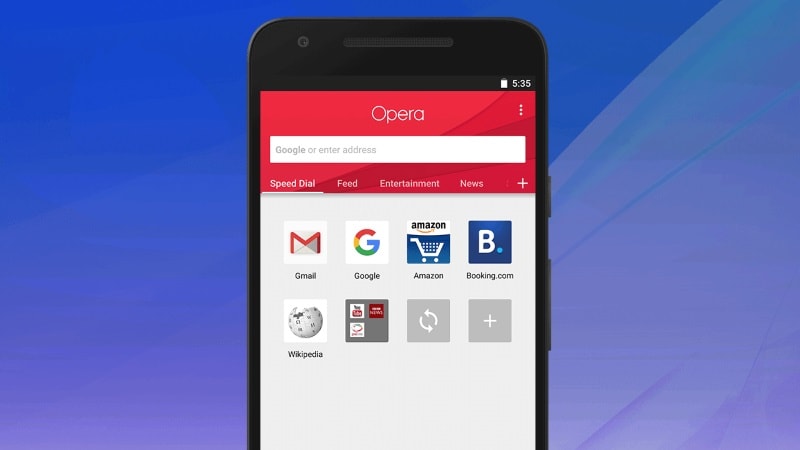- Home
- Internet
- Internet Features
- Four Predictions for Mobile Internet in India in 2017
Four Predictions for Mobile Internet in India in 2017

India is one of the fastest growing economies in the world right now, but when it comes to Internet speed and connection quality, India still lags far behind where it needs to be. Average connection speeds are currently 2.8Mbps, the slowest within Asia. This is something that’s going to change significantly in 2017. With the introduction of 4G, and Reliance Jio having triggered a price war amongst the incumbent networks, the Internet market in India has been revolutionised.
This has created a whole new mobile Internet experience for consumers, and brought in tremendous business opportunities for Indian companies. Looking ahead, these are the trends we should expect in the Indian mobile Internet space in 2017.
Demonetisation grows m-commerce from online to offline
The move to demonetise higher denomination currency notes has created a drive towards developing a cashless economy. Mobile wallets, Unified Payments Interface (UPI), and other online payment modes regaining acceptance among both merchants and customers.
E-wallet users on Paytm, FreeCharge, and MobiKwik have grown significantly in the last two months, and this has also had an impact on offline transactions.
More and more customers will enter the banking system, and m-commerce will grow in significance, not just online, but offline too.
![]()
Streaming video and music accelerates mobile data consumption
India is on the verge of a data revolution like never before in its history. With double digit year-on-year growth in smartphone shipments, consumption of data will only move at an accelerated pace. Video content will be the largest contributor to the overall growth in data consumption.
According to our statistics, the amount of uncompressed data that Opera Mini users have sent to our servers for compression has increased more than 200 percent on Indian video sites, and data from Indian streaming music sites has increased more than 1,100 percent per person in the last 24 months.
As mobile video is increasing its contribution towards data consumption, exclusive content will become critical for ensuring a good user experience for consumers on mobile devices. Services like Hotstar, Voot, Amazon Prime Video, Netflix, YouTube, and Hooq are offering unique content to their users to drive this adoption. Music streaming is also getting bigger in India with players like Saavn, Gaana, and Wynk driving mobile Internet consumption.
AI will bring more first-time users onboard the mobile Web
Artificial Intelligence (AI) is no longer a work of science fiction where machines try to take over the world, a la The Matrix. AI has been around for decades, and it has proved its superiority over human intelligence several times. AI will increase its presence across categories and create more engaging experiences for consumers in terms of delivering relevant news, predicting when their supplies run low, or performing difficult tasks that humans would spend a lot of time on.
We see this technology as particularly helpful in bringing more first-time users on board the mobile Web, with localised and relevant content. For example, Opera’s news section is curated using AI and machine learning, to understand the users’ preferences in regards to the articles.
![]()
Mobile Internet will go beyond smartphones
In the age of connected homes, our mobile devices are becoming the command centres; the home of the future will be the place where gadgets and appliances will be controlled remotely.
Smartphones are comfortable and familiar in many homes today, even for the non-techies in the house. Making smartphones into a central home controller can give consumers greater control over their home environment and security.
From central heating to home lighting, more and more appliances can now be controlled using smartphones – a concept that is often called the Internet of Things. Today’s average home has a plethora of connected devices. And all smart home products, such as laptops, smartphones, TVs, electronic door locks, and thermostats, require a solid, reliable network infrastructure to function at their full potential.
We [Indians] are very good at making these devices affordable. Indian smartphone brands have already gained majority market share and have made smartphones available to the masses. In the next year, we will see more and more Indian companies capture this IoT trend, and make mobile Internet go beyond smartphones.
Sunil Kamath is the Vice President - South Asia and South East Asia, at Opera Software
Catch the latest from the Consumer Electronics Show on Gadgets 360, at our CES 2026 hub.
Related Stories
- Samsung Galaxy Unpacked 2025
- ChatGPT
- Redmi Note 14 Pro+
- iPhone 16
- Apple Vision Pro
- Oneplus 12
- OnePlus Nord CE 3 Lite 5G
- iPhone 13
- Xiaomi 14 Pro
- Oppo Find N3
- Tecno Spark Go (2023)
- Realme V30
- Best Phones Under 25000
- Samsung Galaxy S24 Series
- Cryptocurrency
- iQoo 12
- Samsung Galaxy S24 Ultra
- Giottus
- Samsung Galaxy Z Flip 5
- Apple 'Scary Fast'
- Housefull 5
- GoPro Hero 12 Black Review
- Invincible Season 2
- JioGlass
- HD Ready TV
- Laptop Under 50000
- Smartwatch Under 10000
- Latest Mobile Phones
- Compare Phones
- OPPO Reno 15 Pro Max
- Honor Win RT
- Honor Win
- Xiaomi 17 Ultra Leica Edition
- Xiaomi 17 Ultra
- Huawei Nova 15
- Huawei Nova 15 Pro
- Huawei Nova 15 Ultra
- Asus ProArt P16
- MacBook Pro 14-inch (M5, 2025)
- OPPO Pad Air 5
- Huawei MatePad 11.5 (2026)
- Xiaomi Watch 5
- Huawei Watch 10th Anniversary Edition
- Acerpure Nitro Z Series 100-inch QLED TV
- Samsung 43 Inch LED Ultra HD (4K) Smart TV (UA43UE81AFULXL)
- Asus ROG Ally
- Nintendo Switch Lite
- Haier 1.6 Ton 5 Star Inverter Split AC (HSU19G-MZAID5BN-INV)
- Haier 1.6 Ton 5 Star Inverter Split AC (HSU19G-MZAIM5BN-INV)

















